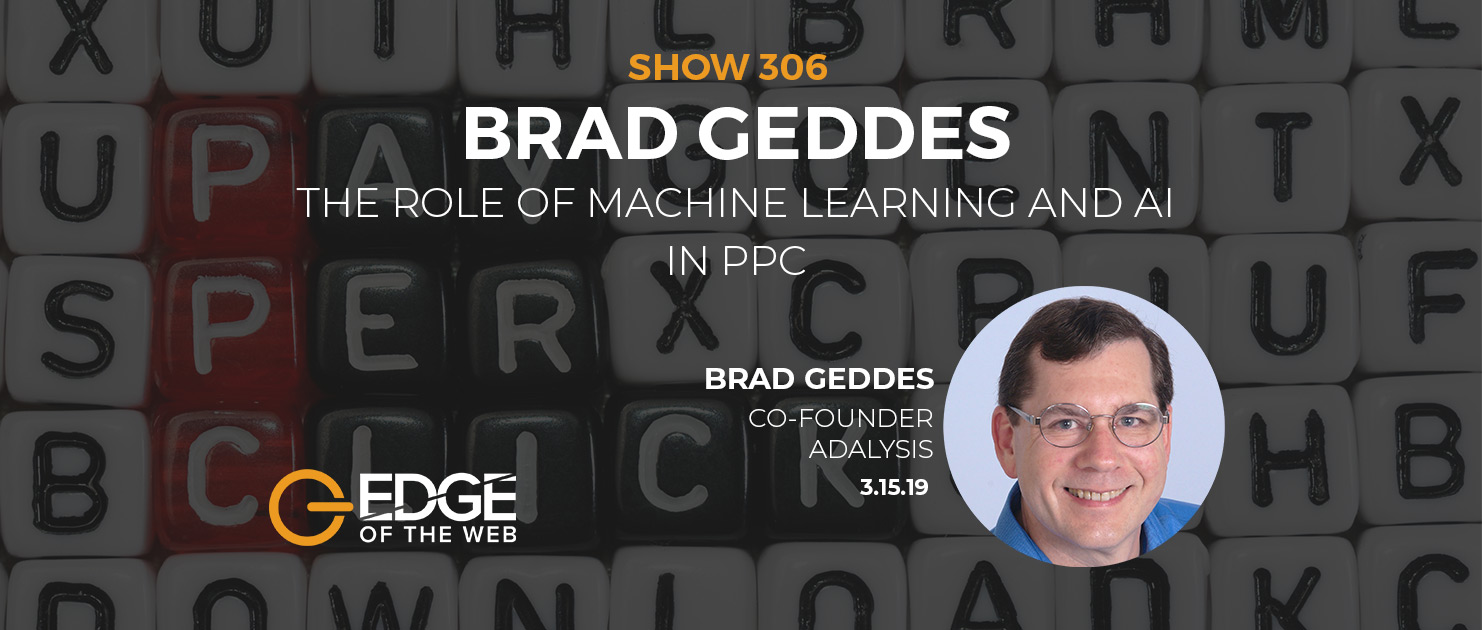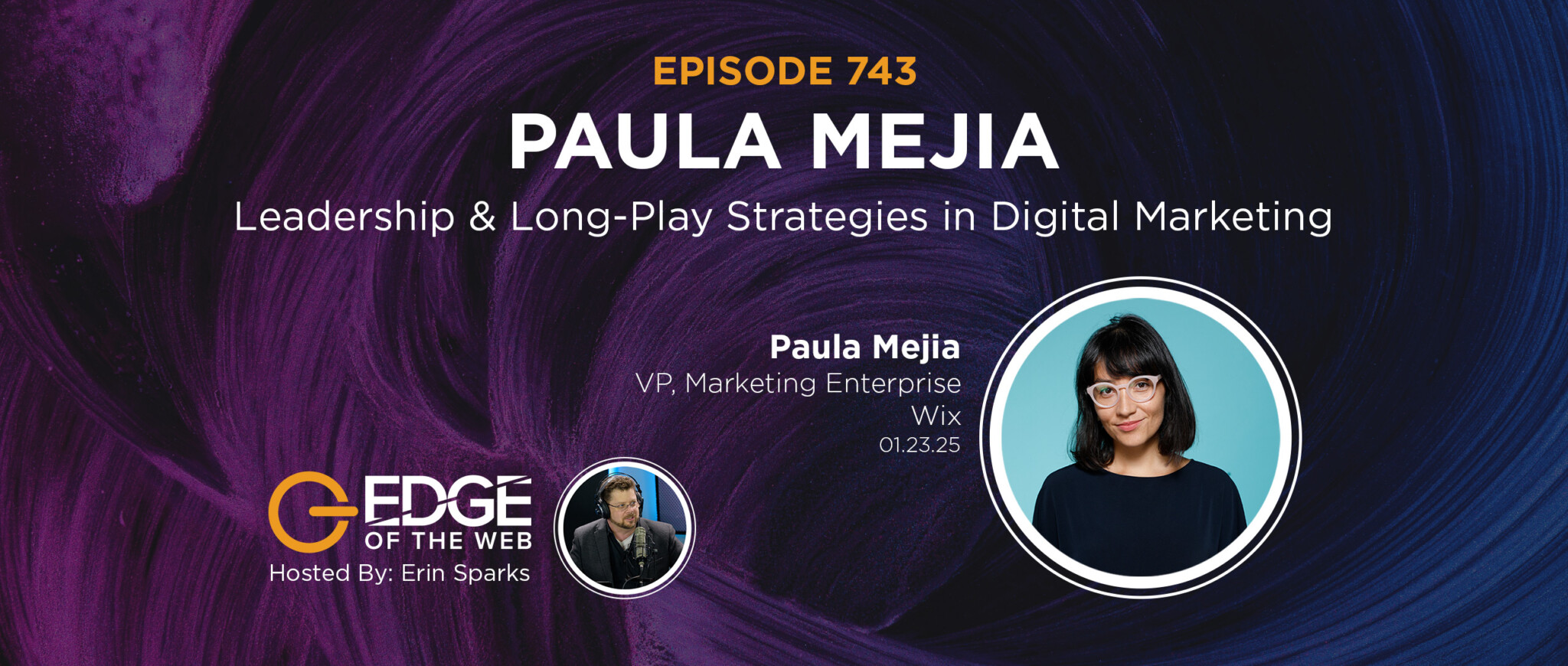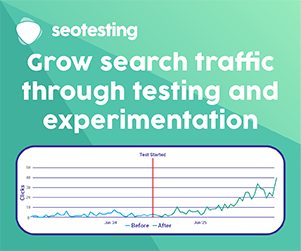When special guest Brad Geddes, PPC expert and co-founder of Adalysis, joined Site Strategics CEO Erin Sparks and Digital Media Director Tom Brodbeck for Episode 306 of the award-winning EDGE of the Web podcast to find out how to put automation to work for digital marketing, Brad shared a lot about the nuts of bolts of automation in a way anyone can understand. Here’s what we learned:
Examples of Smart Automation and Where to Start
Any kind of repeatable inputs can be automated. Take reporting, as an example. Studies have shown that companies spend an average of two full days a month just on reporting. That’s not very smart, because reporting can totally be automated. Another example is PPC bidding. There’s a lot of data inputs for that, so computers are pretty good at it. They’re not always right, but they’re right enough of the time to make it a worthwhile automation. If a machine bids correctly 85% of the time but is wrong 15% of the time and your cost per action (CPA) is 5% above what you want it to be, then you can live with that because you literally didn’t have to touch anything for it to happen. But if the automation serves up a brand ad incorrectly in a regulated industry, you could be in trouble, so you have to be careful. You might have a zero tolerance rate around brand perception, but can live with some errors in other instances.
One way to approach this for beginners is to identify those areas where you can live with some amount of errors because the errors are low-impact and worth it to take some of the work off your plate and let computers do it instead. But if failing to serve up an ad disclaimer line can get you into trouble with FCC or SEC, then you wouldn’t leave that for the computers to do because the stakes are too high.
When Machine Learning Goes Wrong
Machine learning can go badly as well. Take the example of the Microsoft bot unleased in Twitter. Within a matter of hours, because of the things people said to it, the thing became a racist, cursing machine. They had to take it down. There are actually many cases of bots turning evil. The takeaway here is that computers aren’t necessarily good at perceiving bias. So, if your data is biased by race or gender, then your computer is going to biased as well. The computer learns from the data fed to it, so if you feed it a bias, it will learn the bias. This is one of the big, important questions about machine learning in general and specifically in digital marketing: To what extent are we baking bias into the system because of the data itself. And how do you take the bias out when it’s already present? As soon as you start making decisions based on the patterns the computer recognizes, the potential for bias becomes very real.
Some people are working on the assumption that if you just input enough data, it will all even out. After all, the Law of Large Numbers in probability and statistics says that as a sample size grows, its mean gets closer to the average of the whole population. But again, if the whole population displays a bias, then the computer results will be biased as well. That’s just how it works right now.
There is also the notion that if everyone uses machine learning for their digital marketing, then everyone’s ads are going to get pushed into the same places, right? This brings us right back again to the importance of the human element, because in a world driven by machine learning, it’s going to be the brand that creatively stands out from the crowd that will win.
The Importance of Brand in a Machine Learning World
As long as humans continue to play the dominant role in the purchasing of products and services, branding will be incredibly important. So, even if your smart fridge starts ordering your groceries for you, it’s going to do that based on what products you last put in it, including the brand that you put in. Branding will continue to be very important, and that requires a human touch. You can tweak your advertising action plans all you want, but in the end it is the brand that will live on for years and decades and longer.
What Bugs Brad Geddes About the Digital Marketing Industry?
There are actually three things that Brad sees as problematic in the industry right now:
- The fear that machines are taking human jobs. Enough studies have shown throughout history that when machines take over jobs, even more jobs (or better jobs) for humans are created.
- Google sometimes pushes its own standards onto marketers, which can constrain marketers from being their fully creative selves, and that’s problematic.
- Automating for the sake of automation. Smart engagement of automation means letting computers do the pieces that increase efficiency, productivity and profitability. Automating just because everyone’s doing it runs the risk of doing more harm than good.
What Excites Brad About the Digital Marketing Industry?
What is exciting about machine learning and digital marketing is that when you get it right and let the computers do what they’re good at, then digital marketers have more time to do the uniquely human pieces of the process, which is incredibly important because in the end, marketing is still about humans communicating with other humans. Smart automation allows you to let go of the redundant tasks, freeing you up to do the most exciting, important parts of marketing.
Connect with Brad Geddes
Twitter: @bgtheory (https://twitter.com/bgtheory)
LinkedIn: https://www.linkedin.com/in/ewhisper
Adalysis website: https://adalysis.com
Website: https://bgtheory.com
Amazon author page: https://www.amazon.com/Brad-Geddes/e/B0037A2UNK
Your Digital Marketing ROI
Tired of wondering if your digital marketing efforts are paying off? Stop wondering and find out how you’re really doing. EDGE sponsor Site Strategics can put together a Digital Marketing ROI Report that examines your existing SEO, content, social media, and PPC. Visit https://edgeofthewebradio.com/roi/ to get 30% off a comprehensive review of your digital assets!






















